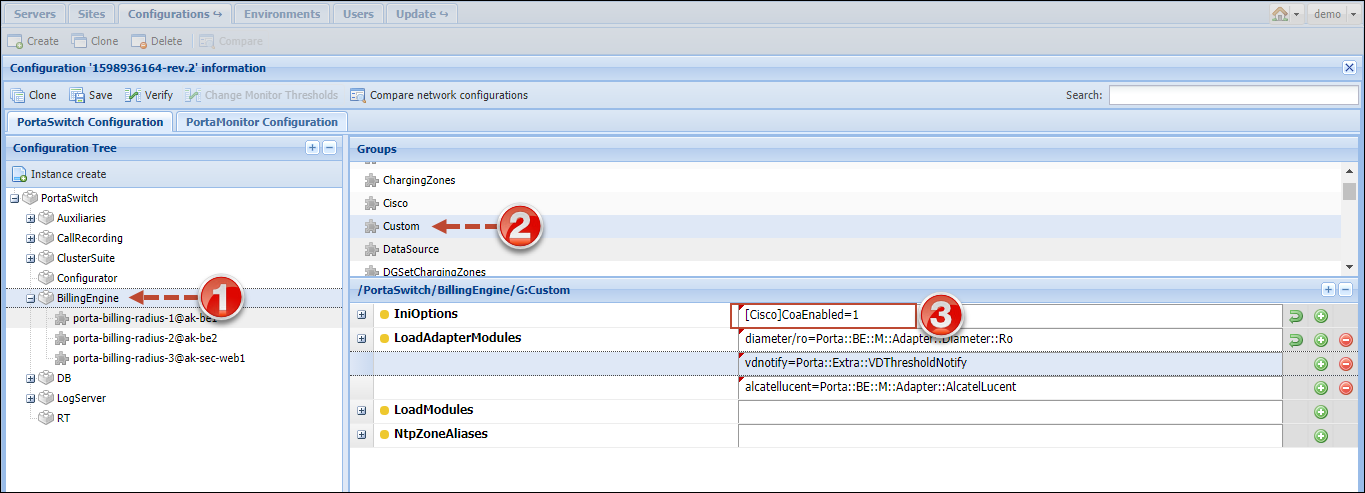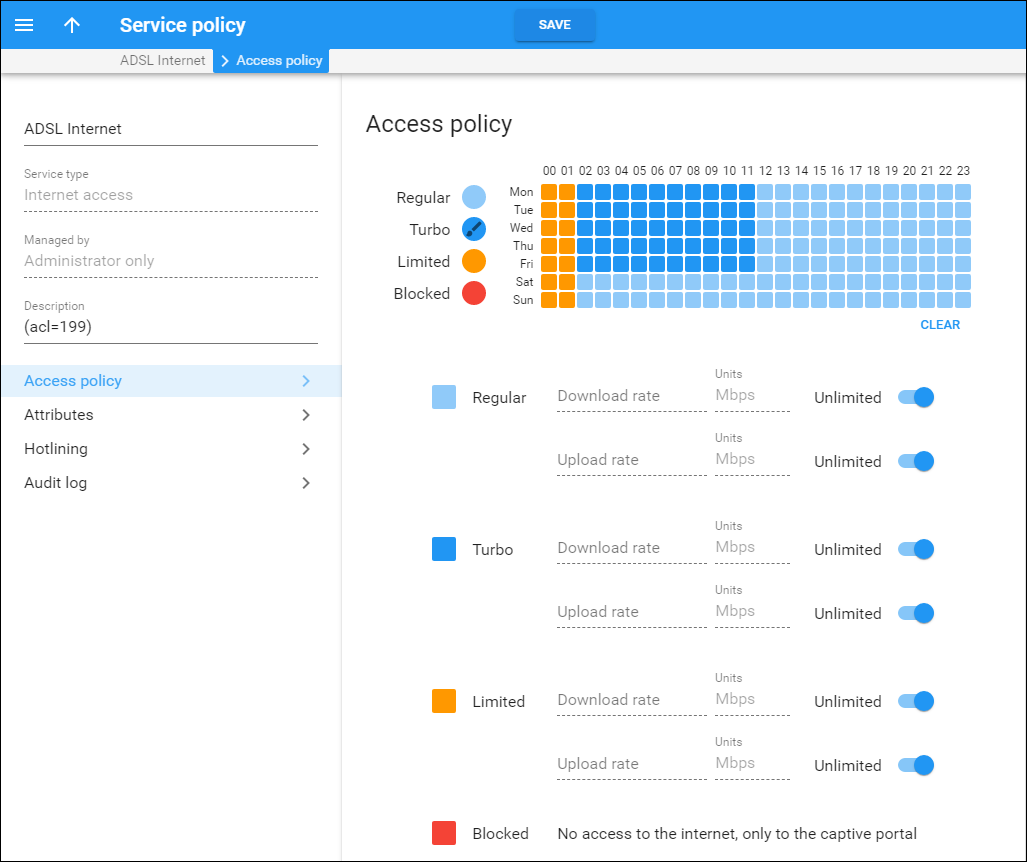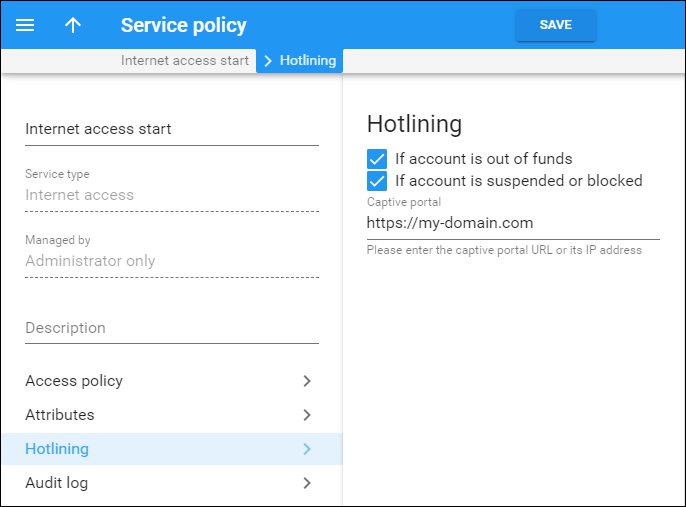With Cisco 7000/7200 series routers ISPs can change Internet speed without interrupting users’ active sessions, depending on the time-period, and redirect users to a hotline portal for ADSL users.
Seamless Internet speed change
When a user establishes an Internet session, the NAS sends an authentication request to PortaBilling. Upon session authentication, PortaBilling generates a response defining the time-period for the session start.
When PortaBilling detects that the time period has changed, it sends a CoA (change of authorization) request to the NAS. The NAS then adjusts the Internet speed for the current session, according to the Internet access policy parameters, without terminating the session.
Configuration
To configure this functionality, follow the next steps:
- On the Configuration server add [Cisco]CoaEnabled=1 value for the IniOptions option.
- On the administrator web interface, define time-periods and download/upload speed on the General Info tab for the Internet access policy.
- Specify ACL in the description field (“(acl=199)” is a recommended value for the ACL).
- Assign the policy to the account.
This provides ISPs with more flexible Internet provisioning and allows the Internet speed to be changed without session interruption.
Hotlining
Cisco 7000/7200 Series routers allow ADSL users to be redirected to a defined web site when:
- their Internet access is blocked according to the time-period set in the Internet access policy, or
- their resources have all been consumed.
During the active Internet session, PortaBilling detects that the time period has been changed to “blocked.” It sends a PoD (Packet of Disconnect) request to NAS. The NAS then disconnects the current session and sends a re-authentication request to PortaBilling. PortaBilling detects that the service is blocked according to the Internet access policy and generates a response. NAS then redirects the end user to a defined website.
Sometimes user’s funds become depleted or their quota is reached while still using the service. In these cases, once the lack of resources has been detected, PortaBilling sends the NAS a PoD (Packet of Disconnect) request. Cisco/NAS then disconnects the session and attempts to re-authorize the user. Having received a re-authorization request, PortaBilling detects the lack of funds for the service and instructs the NAS to redirect the user to the hotline portal. The NAS then redirects the end user to a defined website.
Configuration
An administrator enables the feature on the Hotline page of the Internet access policy and assigns it to the account.
With these features, ISPs introduce advanced service provisioning to their users.





